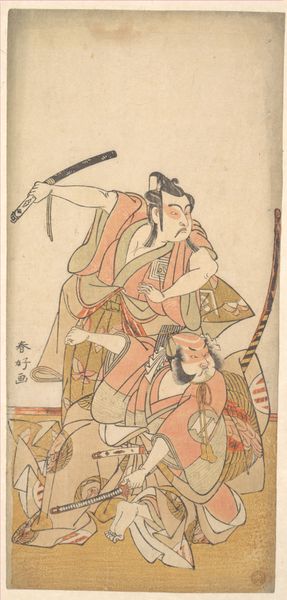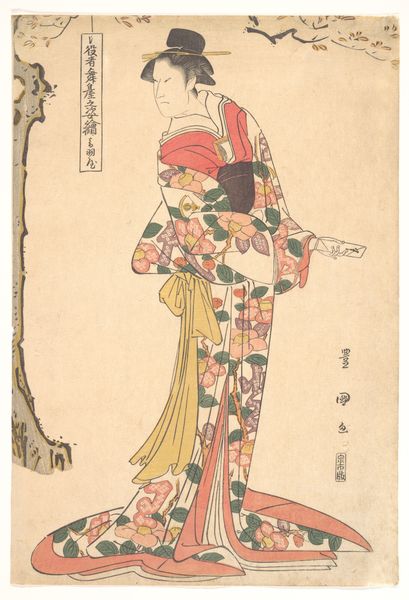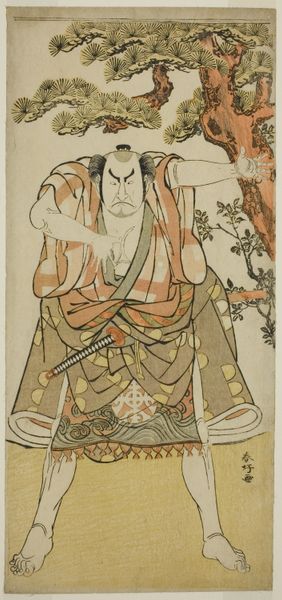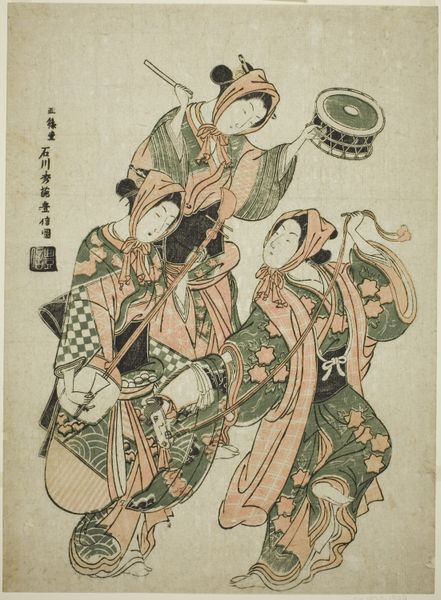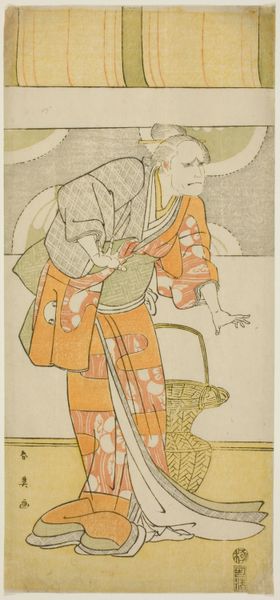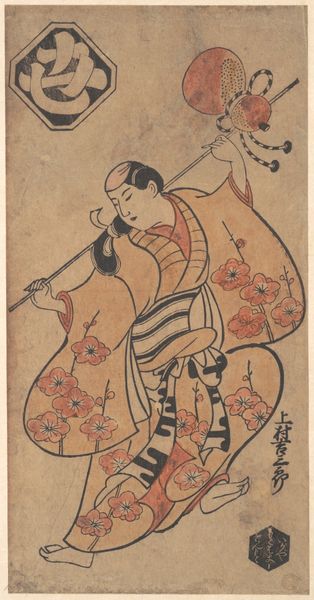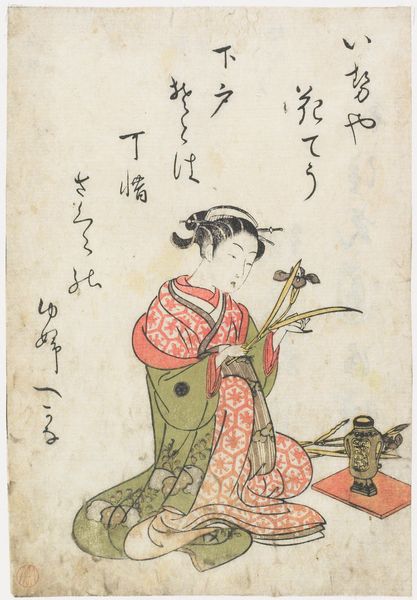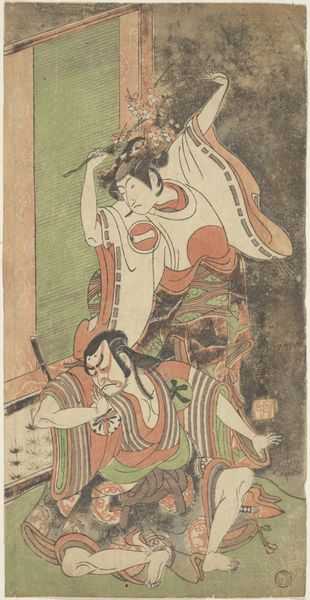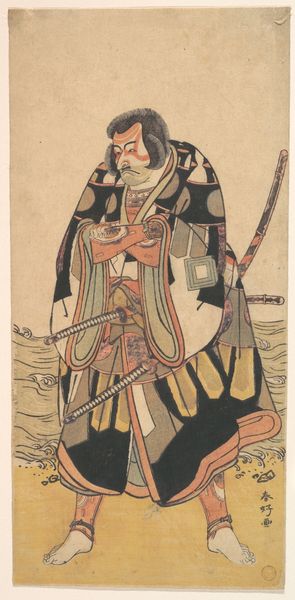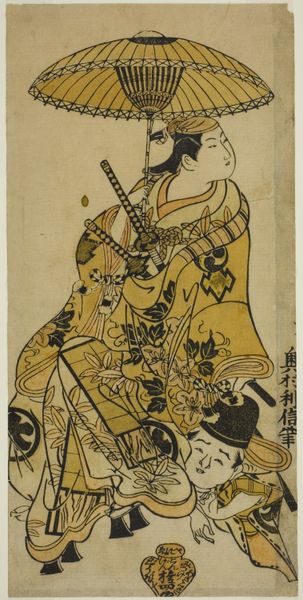
Iwai Kiyotaro in a Shosa Act, Holding a Kine (Pestle) 1779 - 1799
0:00
0:00
print, woodblock-print
#
portrait
#
ink painting
# print
#
asian-art
#
ukiyo-e
#
japan
#
figuration
#
woodblock-print
#
genre-painting
Dimensions: 12 3/4 x 5 3/4 in. (32.4 x 14.6 cm)
Copyright: Public Domain
Editor: This is "Iwai Kiyotaro in a Shosa Act, Holding a Kine (Pestle)," a late 18th-century woodblock print by Katsukawa Shunko. It feels so grounded and real; there's something so powerful in the stillness of her gesture, the rich texture of her garments. What kind of narrative or deeper cultural context can you read in it? Curator: It’s a remarkable example of ukiyo-e, indeed. The print captures the actor Iwai Kiyotaro performing a scene, and her costume is meticulously rendered. However, look closer. A single act of domesticity—grinding grain—is elevated to an art, becoming a stage for the persona, imbuing even mundane tasks with grace and performative spirit. What do you make of the autumn leaves? Editor: I didn't consider those leaves. They must hold some sort of significance, right? Curator: They do, yes. They create a bittersweet backdrop that serves as memento mori. Ukiyo-e, often translated as the "floating world," presents transient beauty against the inevitable change of seasons, mirroring the fleeting nature of life and performance. Her strength exists amidst an environment that tells of seasonal change, yet she continues the labor to ground us in that precise place and moment. How might her performance connect to cultural memory? Editor: So it’s like, she is simultaneously ephemeral, a moment captured in time and timeless as a cultural touchstone that evokes familiar emotions across generations. That blending gives it the feeling of realness that I felt initially. Curator: Precisely. Through symbols and subtle visual cues, Shunko created something that's not just a portrait but a window into the emotional landscape of the time. Do you feel it speaks to the relationship between ritual, performance, and collective memory? Editor: Definitely. I’ll never look at everyday moments quite the same again, appreciating that inherent depth within something simple, because of this artwork.
Comments
No comments
Be the first to comment and join the conversation on the ultimate creative platform.
